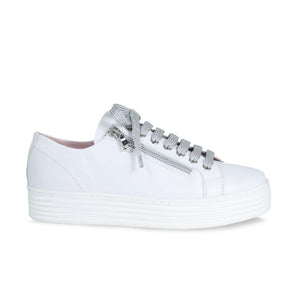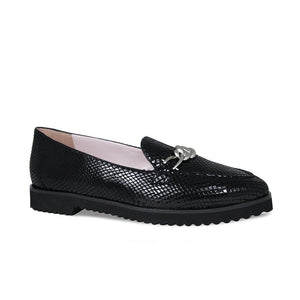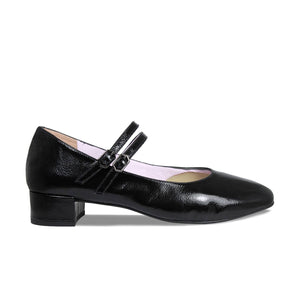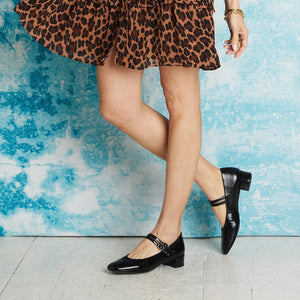Diabetic Neuropathy - What are the Best Shoes for Diabetes?
If you have Diabetes, you may suffer from a type of nerve damage known as Diabetic Neuropathy. This is a form of nerve damage which tends to affect your legs and your feet, as well as your arms and your hands.
It is most common in Diabetes patients over the age of 40 and affects up to 50% of patients. Symptoms can range from pain and numbness to problems with your organs, so it is very important to take care of the parts of your body affected by this nerve damage. A basic first step is wearing the right kind of shoes for diabetes.
Finding the best shoes for Diabetic Neuropathy need not be a challenge. We will give our top tips on finding comfortable shoes for Diabetic Neuropathy, as well as show you a few options for stylish shoes for Diabetes patients.

If you are looking for the best shoes for diabetes, there are several factors which you need to consider. While the idea of "shoes for diabetics" may conjure up connotations of orthopaedic-looking shoes, fear not! Stylish shoes for diabetes exist and there are plenty of fashionable options available.
At Sole Bliss, we have consulted with over 100 podiatrists, including leading podiatrist Dr Brad Schaeffer, to provide the best advice on finding shoes for Diabetic Neuropathy. Here are our podiatrists' top tips:
1. Wear Wide-Fit Shoes
2. Wear Shoes with Cushioned Soles
3. Wear Flat or Low Heeled Shoes
4. Wear Leather Shoes
5. Wear Shoes which are Lace-Up or Adjustable
6. Wear Shoes with Extra Depth
7. Avoid Flip-Flops
1. Wear Wide-Fit Shoes:

SHOP NOW
The best shoes for diabetics are generally wide-fit shoes. Women with diabetes should avoid wearing tight or narrow shoes which can pinch toes and cause damage to the foot. The right kind of diabetic shoes will never cause blisters, corns or calluses, as they are wide and accommodating for your feet.
If you are diabetic, it is very important to avoid any kind of laceration (e.g. cuts or ulcers) on your feet. Diabetic neuropathy often leads to the loss of sensation in your feet, so you need to check your feet regularly for any cuts or laceration. If these injuries are not attended to and become infected, the consequences can be very serious. In some severe cases, this could lead to amputation.
So it is very important to look for wide-fit comfortable shoes for diabetes patients which do not constrict, pressurize or cause harm to your feet.
Diabetics often opt for wide-fit shoes with a rounded toe or a square toe because they are more spacious. There are options for wide-fit pointed shoes too. Just make sure your diabetic shoes have a deep and wide toe-box (the area at the front of the shoe) in order to protect your feet.
2. Wear Shoes with Cushioned Soles:

SHOP NOW
All shoes for diabetes patients should have ultra-soft cushioned soles which will keep your feet comfortable and protected. Diabetes shoes should have good shock absorption which will protect your feet when walking on hard surfaces. This is to avoid straining or injuring your feet in any way.
The soles and inside of your shoes must not have any sharp seams either. Look for diabetes shoes with seam-free leather lining which will prevent rubbing or cutting your feet.
3. Wear Flat or Low Heeled Shoes:

SHOP NOW
Yes, you can wear heels! However we would recommend opting for a lower heel. There are plenty of options for stylish low heels for diabetes patients. You just need to ensure your heels are suitable for your diabetic feet. Like all diabetic shoes, the best heels should be wide-fit with seam-free leather lining and soft cushioned soles.
You should avoid heels which are too high, because they can put unnecessary pressure on the ball of your foot. As always, you need to ensure you do not cut your feet or form blisters, corns or calluses.
4. Wear Leather Shoes:

SHOP NOW
The best shoes for diabetes are made from leather. Leather is soft, flexible and durable. If you have any foot problems, leather is less likely to rub and cause blisters. In warm weather, your feet will sweat less in leather shoes. Therefore it is important to find diabetic shoes which are crafted from very soft yet durable leather.
5. Wear Shoes which are Lace-Up or Adjustable:

SHOP NOW
A lot of shoes for diabetics are lace-ups or adjustable in some way. Look for diabetic shoes with laces, zips, ankle straps or anything which is going to make them more comfortable for you. These sneakers for diabetics, for example, feature a functional zip for easy entry and a lace-up which provides better support and a better fit.
This level of support is important for diabetic feet when you want to be active all day long.
You can also view our collection of Mary-Jane shoes for diabetics which feature an adjustable ankle strap for extra support (and style!)
6. Wear Shoes with Extra Depth:

SHOP NOW
Diabetic shoes should be wide but also deep. This extra depth gives your feet room to breathe and prevents rubbing against the roof of the shoe. Diabetics often have more swollen feet and this extra room can be very important.
If your doctor has prescribed a custom insole or orthotic, this extra depth on your diabetic shoes will be very useful too!
7. Avoid Flip Flops:

SHOP NOW
One final point on shoes for diabetes...you must avoid flip-flops! These sorts of strappy shoes and unsupportive sandals can be very dangerous for your feet. If you wear these kinds of open-toe shoes, you leave your feet vulnerable to cuts. It is also easier for things like gravel to get inside of your shoes.
The straps on flip-flops and sandals can put pressure on your feet and lead to blisters. Instead you should opt for supportive, closed-toe shoes which are designed to comfort and protect diabetic feet.
So these are our Top Tips on finding comfortable shoes for diabetic neuropathy! Sole Bliss shoes are designed to accommodate and comfort diabetic feet. All our shoes are handcrafted from ultra-soft leather with full seam-free leather linings, and deep and wide toe-box designs.
Please follow this link to view the full collection of Shoes for Diabetes. If you have any questions about our shoes' suitability for your feet, please don't hesitate to get in touch. Our friendly, knowledgeable Customer Care Team is here to help.
Diabetic Neuropathy - Top Tips for Everyday Foot Care
In addition to finding comfortable shoes for diabetes, we wanted to provide our Top Tips for looking after diabetic feet in general. It is very important to take care of your feet if you are diabetic, and that goes further than wearing the right shoes for diabetes.
These are recommendations for looking after your feet if you are diabetic. If you lose sensation in your feet or your condition worsens, you should speak to a doctor or podiatrist immediately.
Here are our Top Tips on looking after your feet if you have diabetes:
1. Stop Smoking
2. Monitor Cholesterol, Blood Sugar and Blood Pressure Levels
3. Eat Healthy and Work Out Regularly
4. Check Your Feet for Changes Daily
5. Be Careful When Cutting Your Nails
6. Wear Proper Fitting Shoes
7. Moisturize Daily
8. Stay Away from Blades or Corn Plasters
9. Keep in Touch with Your Healthcare Team
1. Stop Smoking
Smoking carries a greater danger for someone suffering from diabetes. Tar from cigarettes pour toxins into your bloodstream, thickening your blood (2). Once these toxins reach your heart, your blood pressure and heart rate will increase (2) making your heart work harder than it normally would. Your blood circulation will naturally change as the heart pumps blood around your body at a faster rhythm, and due to toxins narrowing your arteries, less oxygen rich blood can circulate to your organs. Your body will prioritize delivering the right amount of blood to organs over other body parts such as your feet, resulting in poor circulation in these areas. Unfortunately, this puts you at even more at risk of a possible amputation.
Stopping smoking is difficult, but your healthcare team can guide you through this difficult time. Your health is worth investing the time and energy to stop.
2. Monitor Cholesterol, Blood Sugar and Blood Pressure Levels
Blood Pressure
Diabetics needs to avoid high blood pressure at all cost! It damages your blood vessels by putting extra pressure on them, making it harder for oxygen rich blood to reach vital organs. This leads to the same circulation issue as smoking, as your body will protect vital organs such as your heart. This can lead to eye, kidney and feet complications.
Ideally, the resting blood pressure level for diabetics should be below 130/80mmHg³
Cholesterol Levels
There are two types of cholesterol: good cholesterol (HDL-C) and bad cholesterol (LDL-C). Diabetics tend to reduce good cholesterol levels and increase bad cholesterol levels, which leads to narrow or blocked arteries⁴, therefore putting diabetics at a greater risk of stroke, heart attack and other heart diseases⁴ .
Narrow or blocked arteries will lead to bad blood circulation that can cause complications in your feet but this can all be managed by regular physical activity and a heart-healthy diet.
Blood Sugar Levels
Keeping your blood sugar within target range will help prevent damage to your feet and can stop things getting worse – but this is easier said than done. Numerous factors can play into keeping your blood sugar in the recommended range. Make sure you know how to eat well from a nutritional standpoint, and that you stay active.
What is your target blood sugar if you are an adult with diabetes?
Type 1 Target Blood Sugar Level:
4 to 7 mmol/l⁵
Type 2 Target Blood Sugar Level:
Before meals: 4 to 7 mmol/l⁵
Two hours after meals: 8.5 mmol/l⁵
What is the average blood sugar level (HbA1c) for a person living with diabetes?
HbA1c is also known as glycated haemoglobin, which is sugar that sticks to your red blood cells for 2-3 months as your body can’t use the sugar properly. This is why the HbA1c test is taken quarterly. Too much sugar damages your blood vessels, leading to further health problems in your eyes and feet.
The target average blood sugar level is: 48 mmol/L⁵
If this is troubling you, or you feel as though your medication isn’t working as effectively as it should be, speak to your healthcare team as there are courses, such as DAFNE to help you get back on track.
3. Eat Healthy and Work Out Regularly
As a start, it is recommended to eat lots of vegetables, have enough fibre in your diet, increase your intake of fish, cut down on processed food, sugar, alcohol and salty food.⁷ The advice of a certified dietitian or nutritionist can tailor a dietary plan that meets an individual’s needs as a healthy, balanced diet is essential!
Additionally, keeping active will help you manage your diabetes, reducing further complications in your feet. Personal Trainers are on hand to help you choose the right activity or workout for you.
According to the American Diabetes Association (ADA), the minimum of 150 minutes of aerobic exercise a week is recommended for a person living with diabetes. These exercises include swimming, running, walking or cycling.⁸
4. Check Your Feet For Changes Daily
Knowing you should be checking your feet daily isn’t enough – you need to know exactly what you’re looking for. People with diabetes can develop visible changes on their feet overnight.
Introduce checking your feet into your everyday routine and seek help from a health professional urgently if you spot any of the following symptoms: breaks in the skin of your feet with discharge leaking from the wound; redness or swelling around an ulcer or blister; extra swelling around a previous blister.
If you are unable to lift your feet up, ask for someone’s help. If you live alone but require help, make sure to book an appointment with your local podiatrist.
Testing the nerve endings (neuropathy) in your feet is extremely important. High blood sugars can injure nerves throughout your body, but it is extremely important to test the feeling in your feet. A simple ‘touch the toe’ test will prevent a loss of sensation, which over time may cause infections and ulcers that could lead to an amputation. Avoid walking around bare footed if you have lost feeling and seek immediate medical help.
To test sensation in your feet, learn more about the ‘touch the toe’ technique here.
5. Be Careful When Cutting Your Nails
Cutting your nails can be trickier than usual if you suffer from diabetes. You could end up piercing the skin by mistake which can lead to further injuries. If you lost sensation in your feet, you need to be extra careful as you might not even notice harming your skin at all.
You should regularly cut your toenails in a straight line – avoiding cutting too short or down the side. Use nail clippers instead of scissors. Make sure to use an emery board to smooth any sharp corners or jagged edges. Clean your toenails gently with a nail brush – never use the sharp points of scissors to clean as this isn’t safe.
Daily hygiene is a simple and easy task which protects your toenails and feet from infections. Simple soap and warm water will do the job – always check that the water isn’t too hot for your feet! Don’t get lost in the bubbles – soaking your feet for a long time result in soggy feet which increase delicate skin and possible injury.
If you've lost some sensation in your feet and you're concerned about issues like ingrown toenails, this is where a professional footcare specialist becomes invaluable. Think of it as essential maintenance rather than a luxury - and whilst you're prioritising foot health, make sure you're wearing proper shoes for diabetes that protect and support your feet throughout the day.
6. Wear Proper Fitting Shoes
Wearing shoes that fits properly have an effect on your overall foot health in the long run. The right shoes will support and conceal your feet where it needs it and keep your feet in the right position. Choosing the right shoes for diabetic feet is absolutely key!
We have already discussed the key factors you need to consider while shopping for shoes for diabetic feet.
Sole Bliss provide a great selection of diabetic shoes and heels that fit the above criteria – try our flat ballet pumps Luna and Lola – or if you’re looking for something with a front strap and small heel, try our stylish Mary Janes.
7. Moisturize Daily
One of the best moisturizers for your feet is an emollient cream. However, it is best to discuss what cream is best suited for your skin with your podiatrist. After moisturising, remember to clean your skin in between your toes so any cream or talcum powder don’t get clogged up - it can cause dermatologic problems - do not skip this step!
8. Stay Away from Blades or Corn Plasters
The health of your skin is priority if you suffer from diabetes. Try to avoid the use of plaster to remove corns or any blade as they can damage your skin. Pumice stones are good alternatives to the above but use it with care. If you are struggling with healing corns or other skin problems, you can always reach out to a certified podiatrist.
9. Keep in Touch with Your Healthcare Team
If you have diabetes, it is essential to see a podiatrist once a year for a check-up, which gives you the chance to discuss those changes you noticed throughout your daily feet examination. However, if you notice any major changes do not wait until your appointment - seek medical help immediately.
Have a chat with your healthcare professional about finding out your risk of developing foot problems. If you are at high or moderate risk, please make sure you understand what needs to be done to prevent problems in the future.
If you have new questions that crop up about how best to care for diabetic feet, or about shoes for diabetic feet, speak to your footcare specialist.
https://www.diabetes.org.uk/diabetes-the-basics/types-of-diabetes/type-1
https://www.nhs.uk/better-health/quit-smoking/
https://www.diabetes.co.uk/high-low-blood-pressure-symptoms.html
https://www.heart.org/en/health-topics/diabetes/why-diabetes-matters/cholesterol-abnormalities--diabetes
https://www.diabetes.org.uk/about-diabetes/looking-after-diabetes/blood-sugar-levels
https://www.diabetes.co.uk/diet/nhs-diet-advice.html
https://care.diabetesjournals.org/content/42/Supplement_1/S46
Customers with Diabetes?
For those struggling to find shoes for diabetes, discovering the right shoes are a game-changer for comfort and relief. Sole Bliss shoes are tailored to tackle the challenges linked to foot conditions including nerve damage known as diabetic neuropathy.
Shoes suitable for diabetic neuropathy should prioritize comfort and protection. Look for shoes with seamless and soft leather interiors to prevent rubbing, spacious toe room to reduce pressure points, and extra cushioning for shock absorption and stability.
Rather than just taking our word for it, this diabetes customer review below shares a first-hand experience, showcasing the transformative impact of Sole Bliss shoes.
"Absolute bliss! The most comfortable pair of trainers I have ever had, and there are quite a few. From not wanting to walk far because of uncomfortable shoes due to feet problems brought on by diabetes, from the first time of wearing these trainers I felt like I was walking on air. I love them and will be buying more" – Carolyn
https://www.reviews.io/company-review/store/sole-bliss/18973316
If you are looking for fashionable wide width shoes and need any help finding the right shoes for diabetes for you, please feel free to contact our friendly, knowledgeable customer care team who are here to help!























